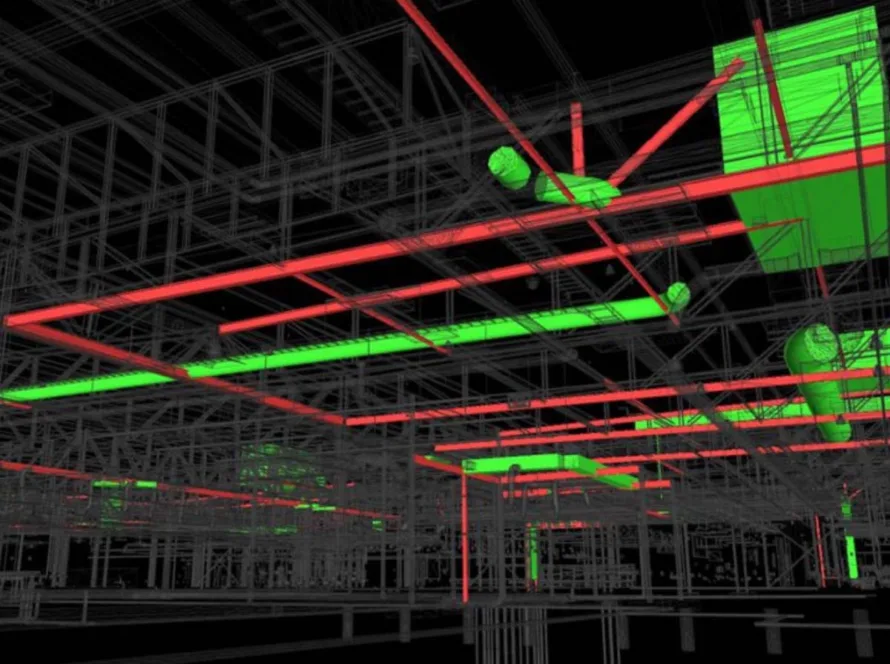Introduction
Building Information Modeling (BIM) has transformed the construction industry by revolutionizing the way buildings are designed, constructed, and managed. Alongwith it this will provides you a digital representation of a building project, allowing stakeholders to visualize the project in 3D.
Building Information Modeling (BIM) is proving to be a game-changer for the healthcare industry, particularly in the design and construction of complex healthcare facilities.
Gradually the healthcare industry is seeking the help of BIM services to boost their business in the right direction. The dependency of the BIM Services increases in the healthcare industry.
Importance Of BIM In Healthcare Sector
There are several crucial importance of BIM in the healthcare sector. This can boost the scope of your architectural modelling in building civil structure. BIM modelling can help your business to grow in the correct direction especially the architecture services.
1. Enhanced Collaboration
BIM fosters better communication between architects, engineers, contractors, and healthcare providers. Everyone involved can visualize the project in a single digital model, streamlining the design process and reducing misunderstandings.
2. Improved Efficiency
BIM allows for clash detection, identifying potential conflicts between different building systems (electrical, plumbing, HVAC) before construction begins. This minimizes rework on-site, saving time and money.
3. Optimized Design For Functionality
Complexities like patient flow, room layouts, and medical equipment integration can be meticulously planned within the BIM model. This ensures the facility is designed for optimal functionality and patient care.
4. Cost & Schedule Management
BIM facilitates better cost estimating and scheduling throughout the project lifecycle. Material quantities can be accurately determined, and construction sequencing can be optimized. You should be well aware of your facility management while running your healthcare industry.
5. Long Term Facility Management
BIM creates a digital twin of the healthcare facility, a data-rich model containing information about every component. This facilitates future maintenance, renovations, and space management. You need to take care of the situations while reaching your goals with complete ease.
Benefits Of Using BIM In Healthcare Facilities
There are several benefits of using BIM in healthcare facilities that you should be well aware off. You cannot make your selection and choices in the incorrect end. Once you follow the process things can become easier for you.
1. Patient Centric Design
BIM allows for designing with patients in mind. Features like 3D modeling and virtual walkthroughs help visualize patient flow, room layouts, and wayfinding, promoting a healing environment.
2. Optimized Equipment Integration
Complex medical equipment integration becomes effortless with BIM. The model can accommodate specific equipment dimensions and operational needs, ensuring seamless functionality within the designed space.
3. Improved Collaboration
BIM fosters a collaborative environment for all stakeholders – architects, engineers, contractors, and healthcare professionals. The shared digital model facilitates communication, clash detection, and real-time design modifications.
4. Enhanced Efficiency & Cost Savings
BIM helps identify and address potential issues like clashes between building systems before construction starts. This minimizes costly rework and delays down the line. Additionally, BIM allows for accurate material quantification and optimized construction sequencing, leading to cost savings.
5. Sustainable Design & Flexibility
BIM can be used to explore and implement sustainable design strategies for energy efficiency and resource conservation. The model also enables exploring modular construction for future expansion or adaptation.
Challenges & Considerations Using BIM Structures In Healthcare Industry
There are several different kinds of challenges of using BIM in Healthcare industry. You should be well aware of it. Some of the core challenges that you should be well aware off are as follows:-
- Implementing BIM requires investment in software, hardware, and training for staff.
- BIM software from different vendors may not always seamlessly integrate. Ensuring all project partners utilize compatible BIM tools is crucial for smooth collaboration.
- BIM models contain a wealth of data about the facility. Establishing clear data ownership protocols and robust security measures is essential to protect sensitive information.
- Transitioning from traditional workflows to BIM-based processes requires careful planning and adaptation.
- The healthcare industry is still developing standardized BIM practices. Staying updated on evolving best practices and leveraging industry resources is crucial for optimal BIM implementation.
Future Trends & Innovation Of BIM In Healthcare Sector
BIM architectural services are evolving at a faster pace in the healthcare sector. You need to be well aware of it while reaching your goals with complete ease. Some of the key factors that you should know here are as follows:-
- Application of AI Powered BIM.
- Realtime & 4D BIM.
- Use of VR or MR Immersive Design & Training.
- Integration with Internet Of Things.
Final Take Away
Hence, if you want to grow your business in the correct end things are going to be easier for you. By embracing these future trends and innovations, BIM will empower healthcare organizations to design and build facilities that are not only functional and cost-effective, but also contribute to improved patient care, staff well-being, and overall operational excellence.





